In pictures: Virgin Atlantic’s onboard bars from 1984 to 2025
Links on Head for Points may support the site by paying a commission. See here for all partner links.
Earlier this week, Virgin Atlantic CEO Shai Weiss announced that the airline would be retiring its onboard bars from 2028, with the last going in 2030.
Virgin Atlantic says it was the first airline to introduce a bar on its planes back when it was founded by Sir Richard Branson in 1984. I thought it would be fun to take a trip down memory lane and see how the bar has evolved in the 41 years since then.
A lot of the details are hazy – especially from the 80s and 90s – and I need to thank Virgin Atlantic, John Walton and the design agencies involved in some of them, including Softroom and Viewport.
We’d love to hear your memories of the onboard bar, particularly if you ever experienced it during the 80s, 90s or early 00s. Here’s a photo of me from Virgin’s Boeing 747 farewell event in December 2020:
Raising the (onboard) bar
Richard Branson launched Virgin Atlantic’s first flight on 22nd June 1984.
The inaugural route was from London Gatwick to New York / Newark onboard Virgin’s only aircraft, a Boeing 747-200 christened ‘Maiden Voyager’. From its first flight, Virgin Atlantic was an innovator with the first onboard bar area for an airline.
I’m told this was an L-shaped bar at the top of the stairs to the iconic upper deck.
Ten years later, in 1994, Virgin Atlantic introduced the Boeing 747-400 to its fleet. This featured a redesigned Upper Class cabin, but still with recliner seats – it would be almost a decade until lie-flat seating came along.
In 2003, these aircraft were refurbished with a brand new Upper Class seat. This was a game-changer, introducing lie-flat seats with all-aisle-access, a first for business class worldwide. (British Airways, which was the first to introduce lie-flat seats, would operate its 2-3-2 yin-yang layout for years to come.)
The cabins were created by design studio Softroom, which worked on both the bar and new Upper Class seat (together with PearsonLloyd, another agency).
Softroom says the designs “set new standards for aviation interiors, creating a twenty—first century travel experience with an air of natural glamour.” Looking at the photos below, it seems like from a different era at the turn of the Millennium. The only thing missing is the Spice Girls:
“Our design offers the passenger effortlessly chic and relaxed experience. The interior has an architecturally integrated quality — from intelligent colour and material choices throughout cabin to the controllable lighting system used to invigorate the entire space. A contemporary chandelier helps to define the bar area and further accentuates its glamorous atmosphere.
“A key achievement of the design team was for the interior to offer an experience closer to that found in ground—based environments, such as in luxury lounges, hotels, restaurants and bars. It was also been built to a quality standard well beyond the industry’s norm and which raise passenger expectations of air travel for the future.”
As you can see above, five barstools surrounded the horseshoe-shaped bar at the back of the cabin on the main deck of the 747. Compared to newer iterations, the bar was almost fully open to the Upper Class cabin.
Interestingly, this was not the first concept Softroom came up with. Initially, the designers pursued a bar that was even more open to the cabin and surrounded by communal lounge seating.
“By maintaining open lines of sight across the cabin, the room would have a lounge-like feel, with the barman cast as ‘maitre d’, his positioning not unlike that of a DJ overlooking a dancefloor.”
One of the designers, Christopher Bagot, explained:
“We wanted to empower the passengers to help themselves to refreshments, much as you would make use of a drinks table at a house party.”
But that is not what Virgin’s customers wanted. After doing some customer research, it became clear that flyers wanted “a strong separation between the bar and the remainder of the cabin.”
That necessitated a return to the drawing board resulting in what you see above – a bar ‘room’ squeezed into the back of the cabin, with stools rather than the cocktail lounge initially envisaged.
Shaken and stirred
These Boeing 747-400s were flying until 2020 and in 2008 they made an appearance in Daniel Craig’s second outing as James Bond, Quantum of Solace, when he downs several ‘Vespers’. (Is it a coincidence that his seatmate resembles Richard Branson…?!)
You can clearly see the Virgin Atlantic crew member acting as bar tender in these scenes, as well as the old ‘coffin class’ Upper Class seating:
(For some reason, it seems the back wall of the bar was removed for these scenes, perhaps to create a greater sense of being on a plane. You can watch the full scene on YouTube here.)
In 2012, the A330-300s entered the fleet with a redesigned bar area. These were designed by Viewport Studio, then known as VW+BS:
“We opened up our bar, allowing everyone to walk around it, reflecting trends happening on the ground with pop-up bars and the new speakeasy. It was also angled to maximise visual impact and to optimise the narrow footprint of an airplane cabin.
“The cantilevered bar stools, side perches and standing room beyond created a convivial destination for Upper Class passengers after take-off, while having an aesthetic that was decidedly futuristic and belonged in the sky.”
I particularly love the twisted silver bar stools (made of machined aluminium) which were dropped at the next redesign.
What is clever about this edition is that the angle of the bar also acted as a welcome to all passengers, including those in economy, who board via the second doors. Even if you weren’t entitled to use the bar it created a distinctive first impression, elevating Virgin’s brand.
Just two years later, in 2014, Virgin Atlantic introduced yet another onboard bar design, this time on the Boeing 787-9s. This was once again designed by Viewport Studio and shared a similar, angled shape:
The 787 bar retained the angled nature of the A330 bar but introduced new materials, including a subtly translucent white wall panel that let LED backlighting glow through in the shape of three-pointed stars.
“The cantilevered bar and the sharp cutaway on the underside create a distinctly architectural quality and also emphasis the lightness and volume of the aircraft entrance. The angled ceiling panels create a subtle refraction of light into the space.
“Around the bar counter are four stools – two opposite each other so that you can dine face to face. There is a perch to lean on while having a drink and a 24 inch touchscreen monitor with content from the inflight entertainment or that allows you to upload material for a presentation.”
The saga doesn’t end there. In 2017, Virgin Atlantic performed a major refit of its A330 fleet, ripping out the ‘Dream Suite’ Upper Class cabin. This had been installed in 2012 but had not performed well with customers, and was replaced with the same updated 2003-era seats fitted on the Boeing 787 fleet.
This necessitated a redesign of the bar. The location remained the same (at Doors 2) but the angled bar was removed and replaced with a perpendicular bar facing forward:
This bar incorporated the same finishes as the 787 bar including the backlit thermoplastic panels but featured a more protected area for a crew member to act as bar-tender without blocking the aisle.
A stool too far
The 2017 A330 design ended up being the last incarnation of the onboard bar. From 2019 onwards, new aircraft deliveries came with a new social space called ‘The Loft’.
Still located at the main doorways where the majority of passengers board, the bar was ditched to be replaced by banquette seating where passengers could sit and talk. A later update, introduced in 2023 on the A330-900neo fleet, included a self-service drinks fridge.
Also introduced during this time was another concept, The Booth. Five of the large A350-1000s were configured with smaller Upper Class cabins for routes with less premium demand. With only four rows of business class seating, the Upper Class cabin did not stretch to the second doors where The Loft was located.
Instead, Virgin Atlantic introduced something it called The Booth. This was a small, two-person booth the size of an airplane lavatory that was fitted at the front of the aircraft.
The idea was that Virgin Atlantic would offer free experiences to passengers such as wine tasting, cognac and praline pairings, private dining and game time. However, with just a handful of aircraft featuring The Booth the concept never really took off.
Conclusion
Over the years, Virgin Atlantic’s onboard bar – and later The Loft – became part of its image. It proved that Virgin Atlantic was there to party, not to work – unlike ‘that other airline’ it has so often gone head-to-head with.
Although I wasn’t old enough to try it, it feels like the idea shined brightest in the late nineties and early noughties, when optimism was at its highest. New Labour, the Spice Girls, the new Millennium and Virgin Atlantic’s lie-flat all-aisle-access Upper Class. What more could you want!
In 2030 it will be time to bid farewell to this iconic Virgin statement. But not without, says Virgin Atlantic, one last big farewell party.

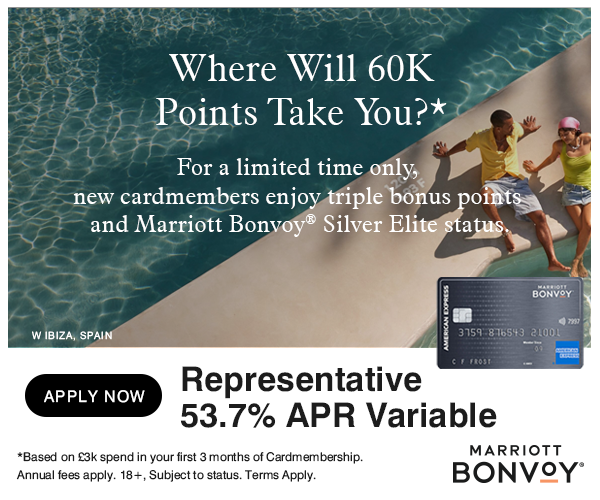

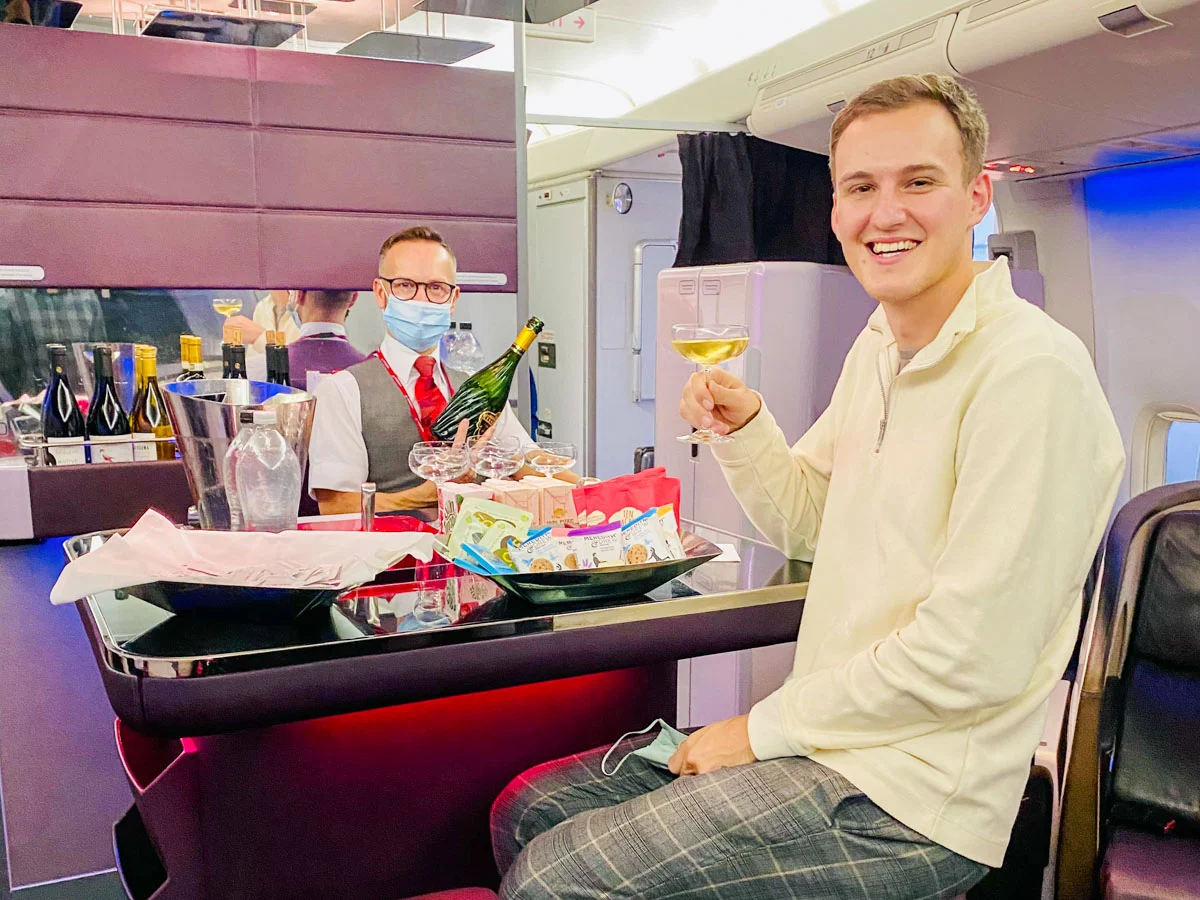
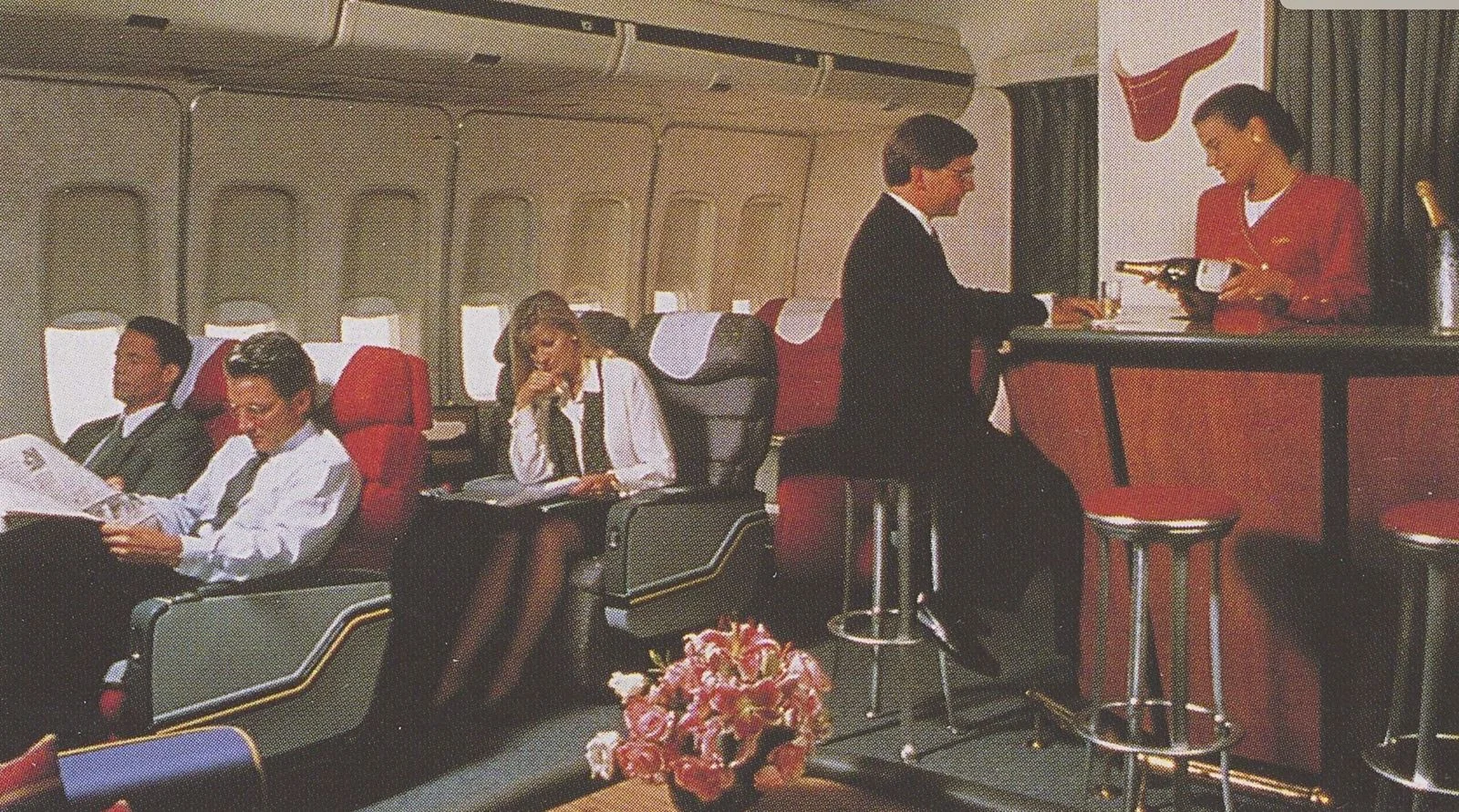
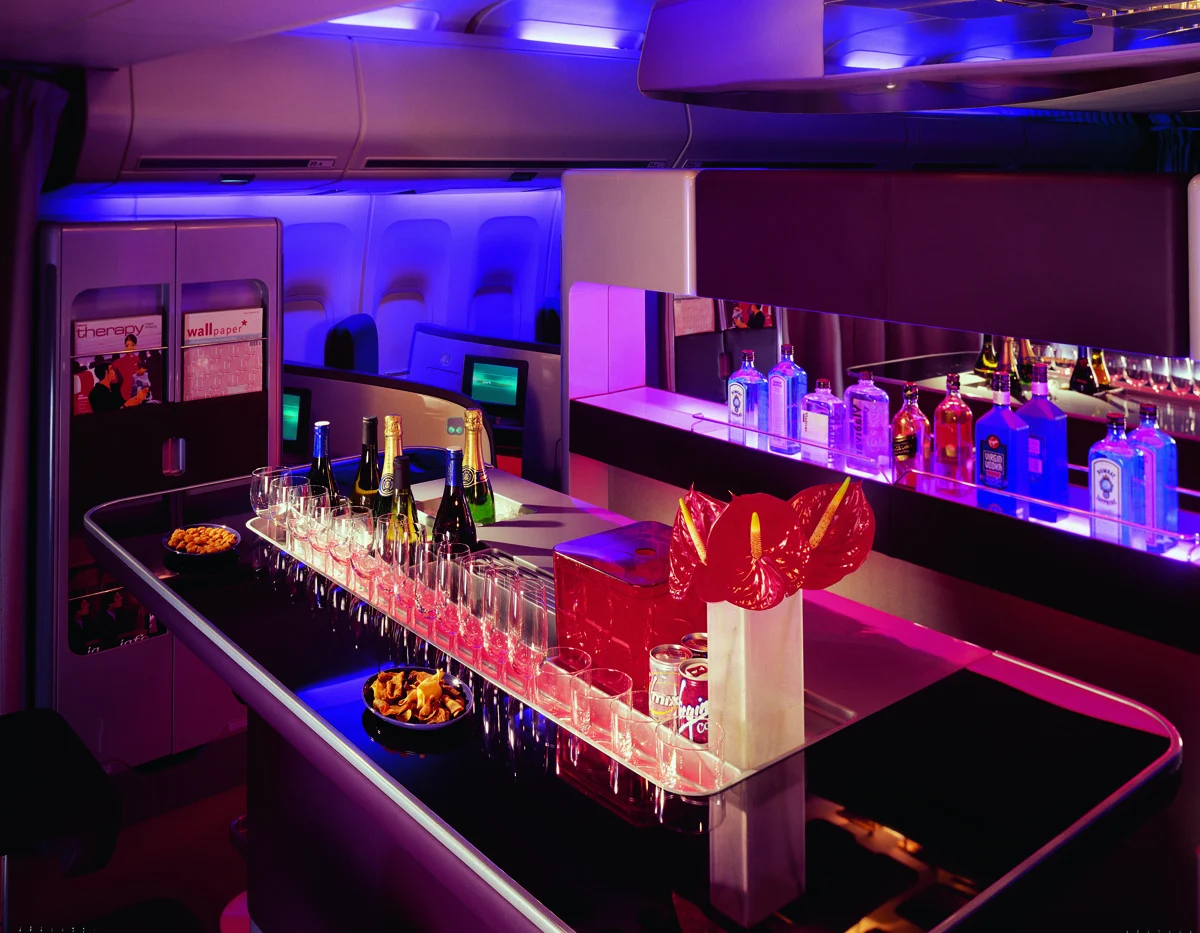
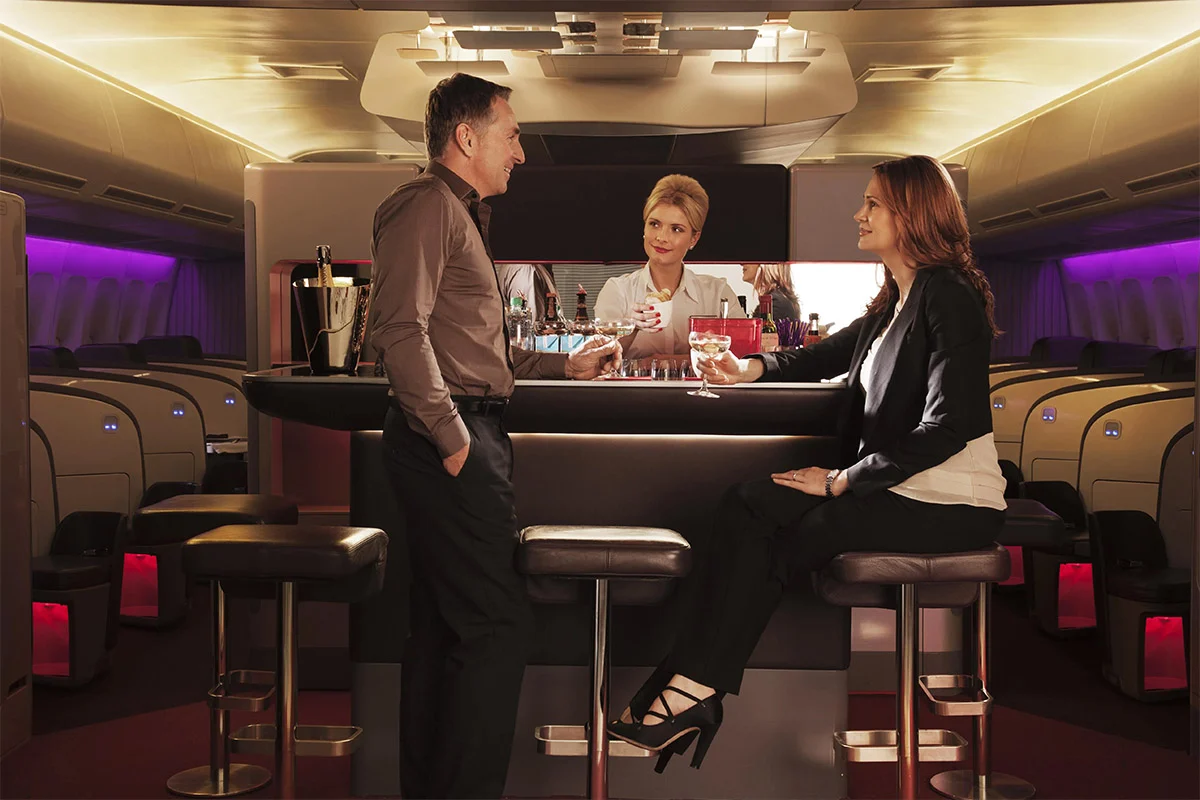
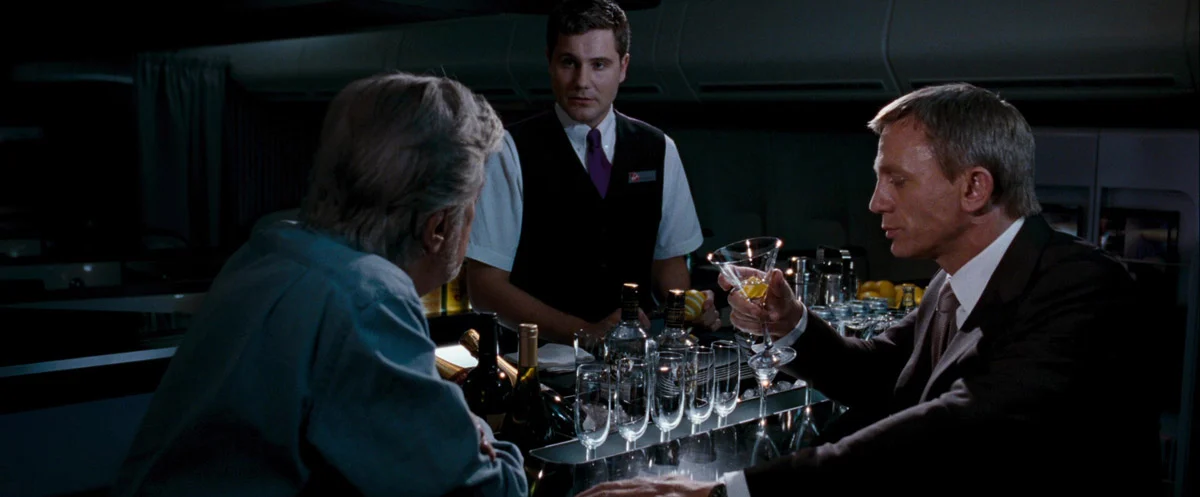
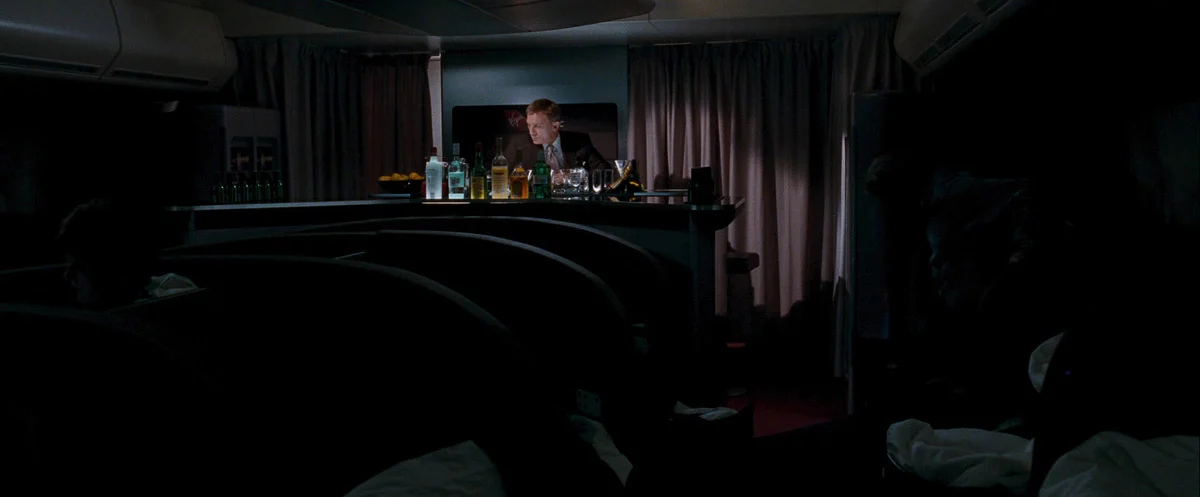
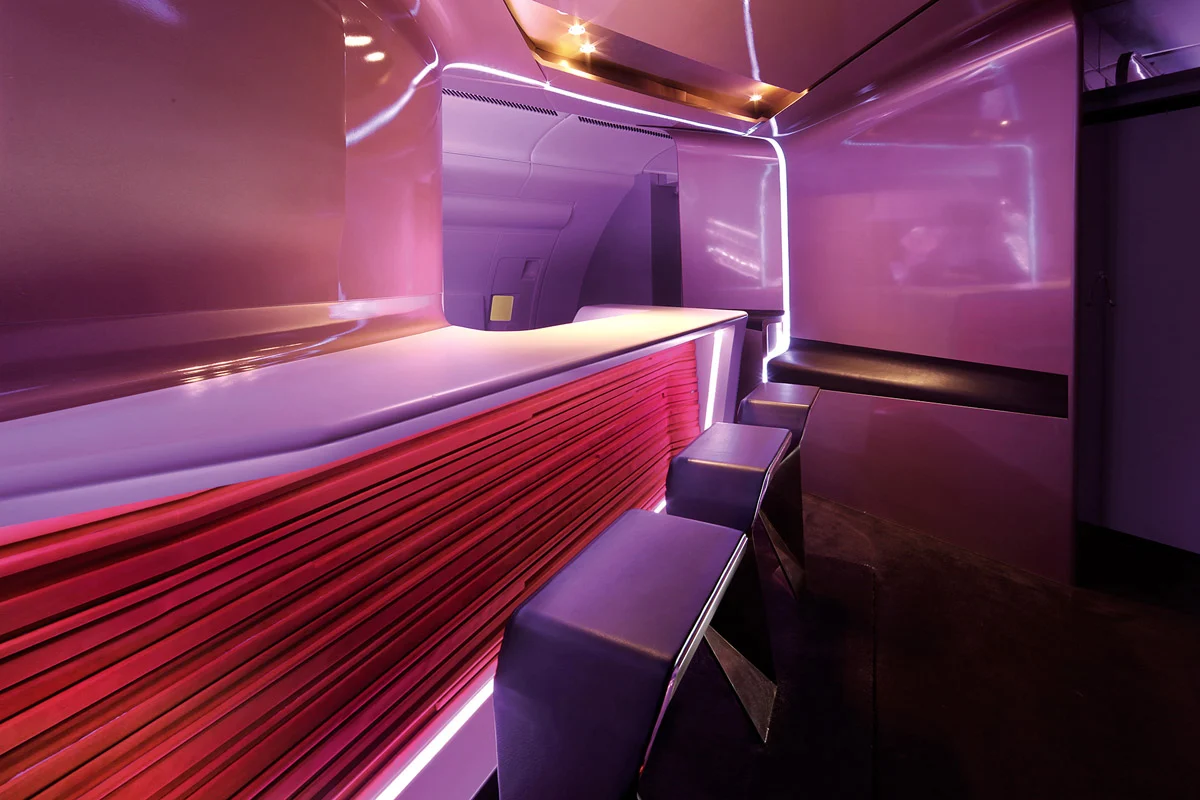
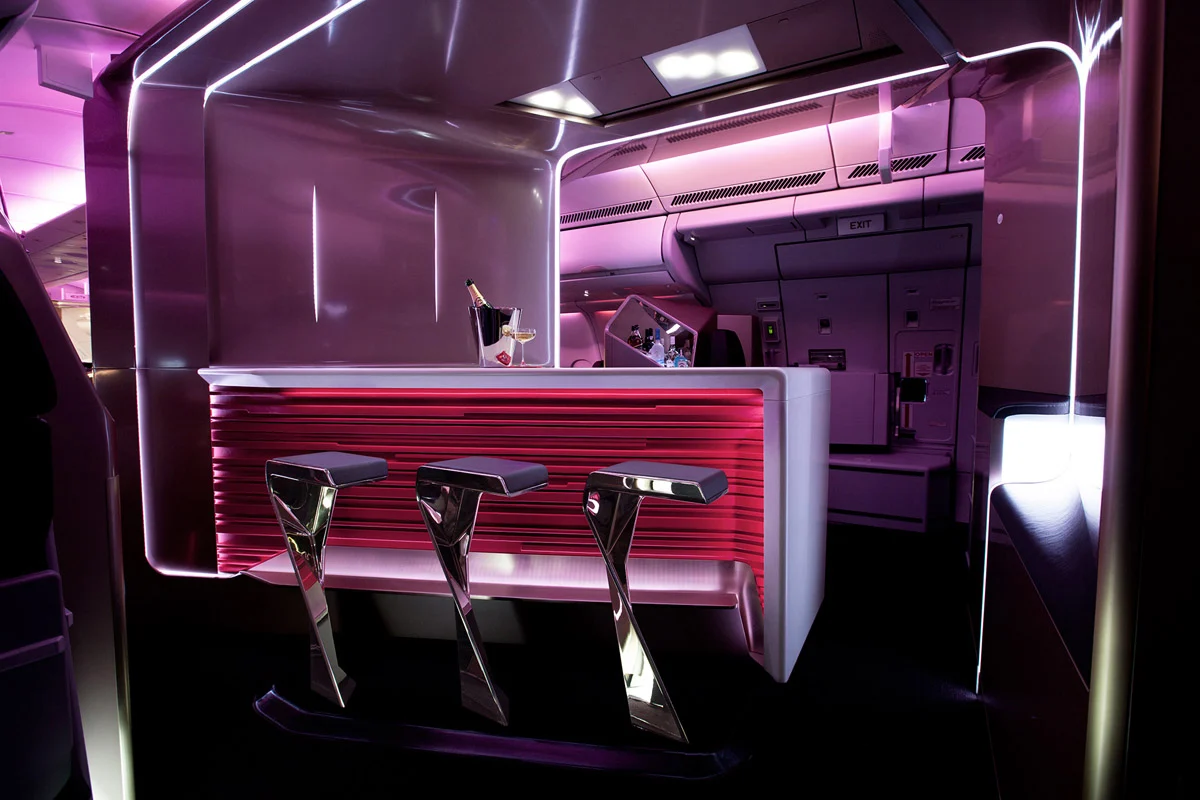
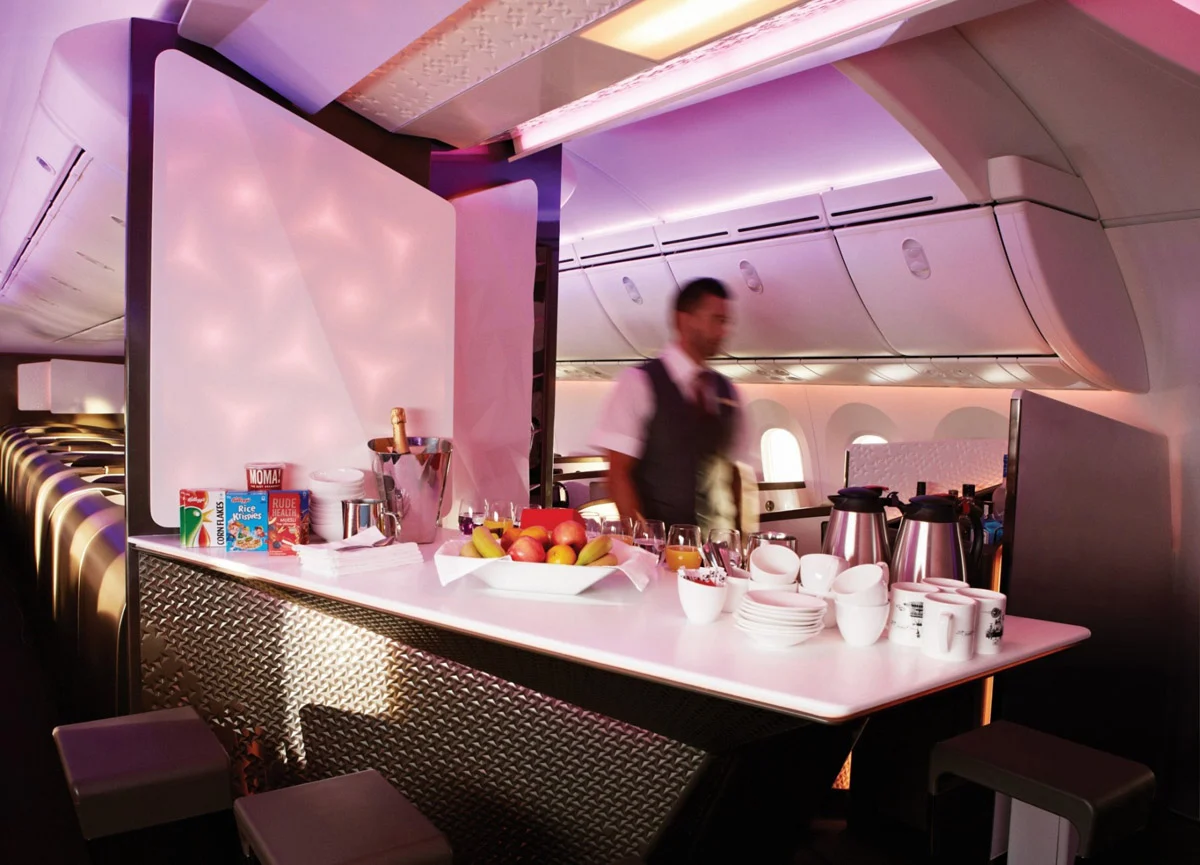
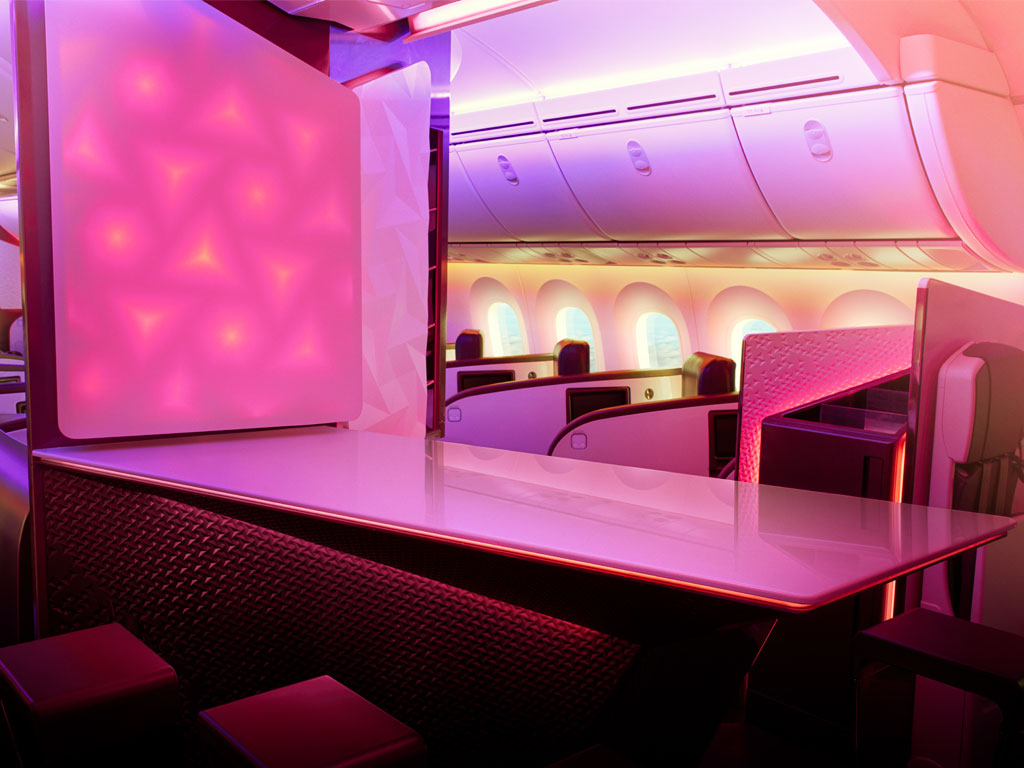
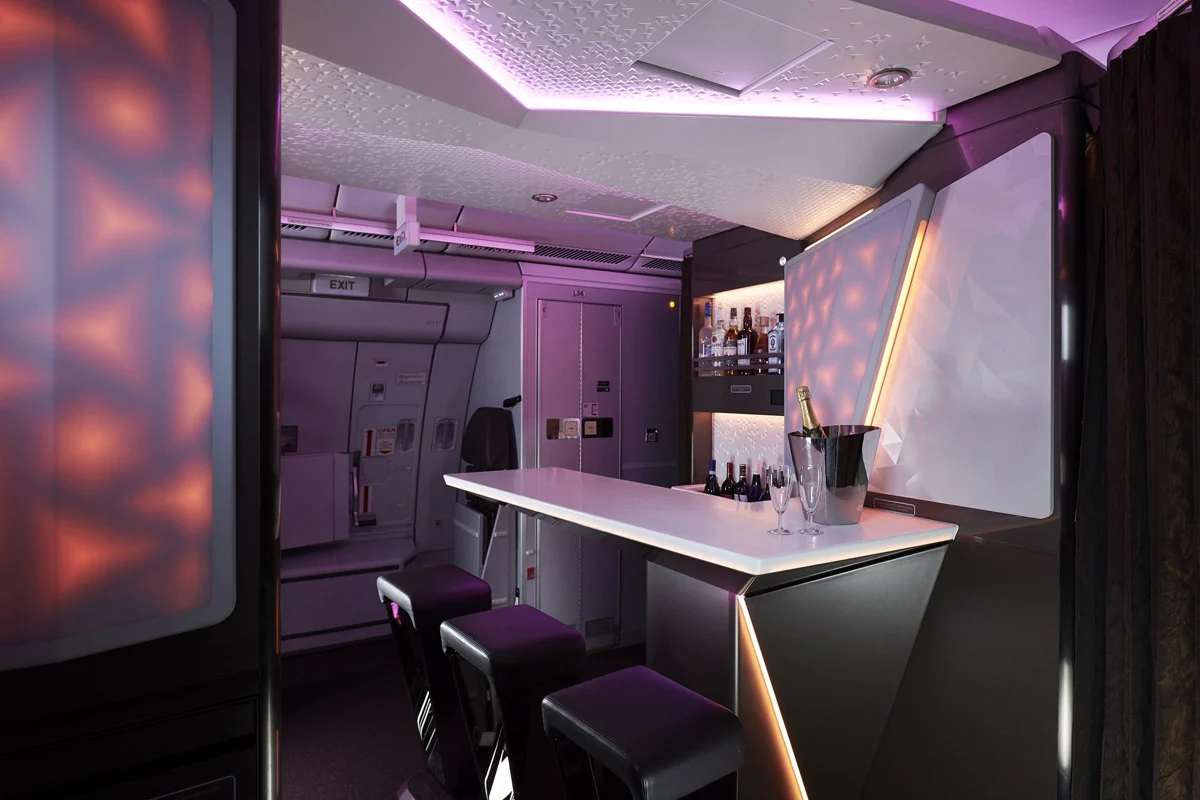

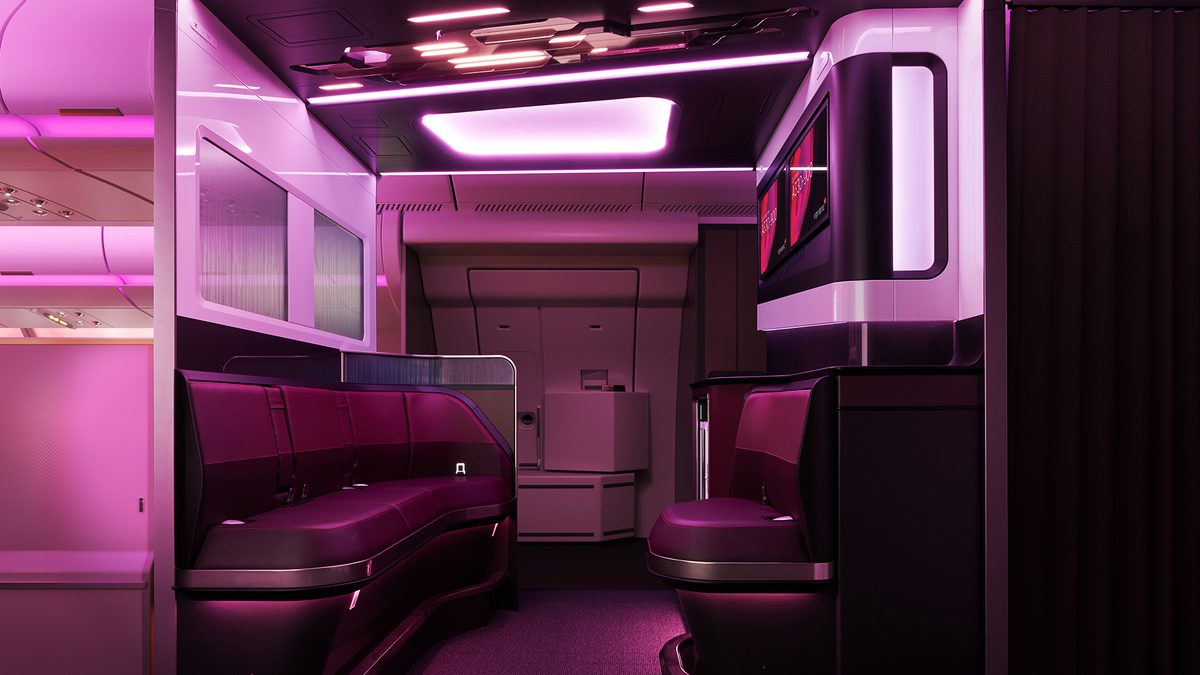
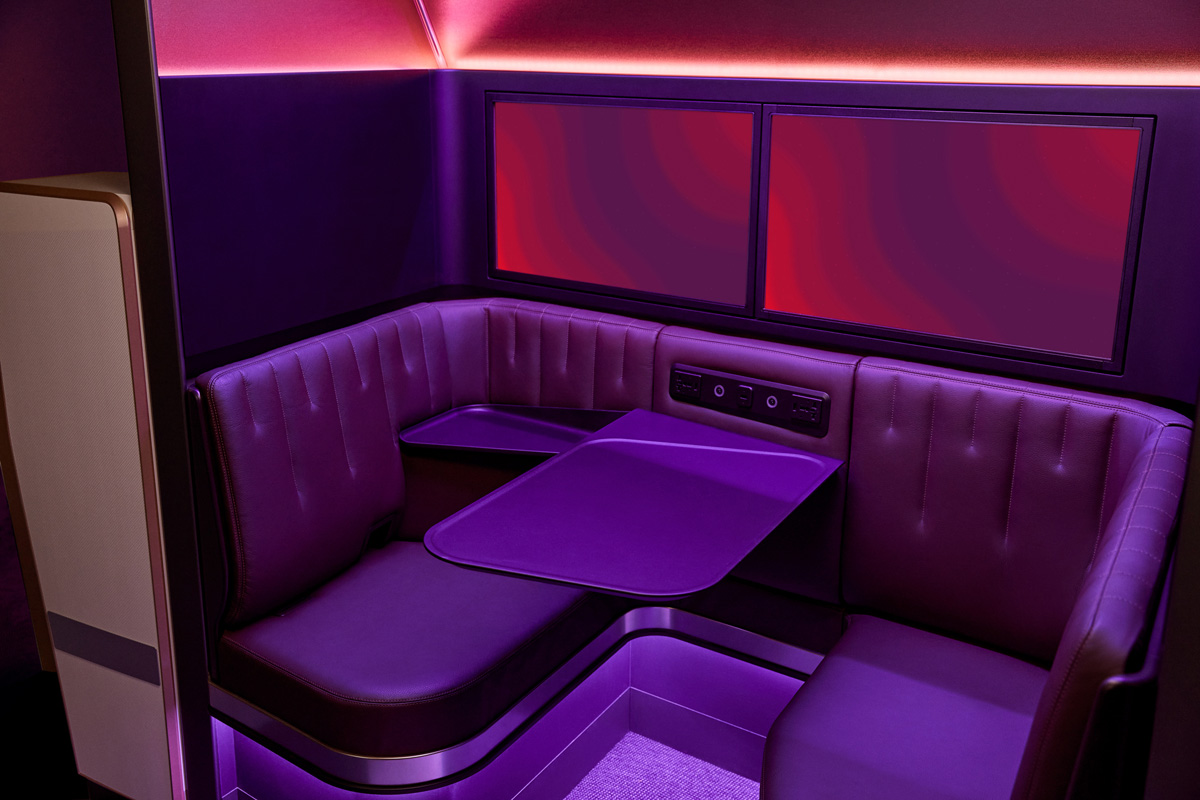
 Rob
Rob 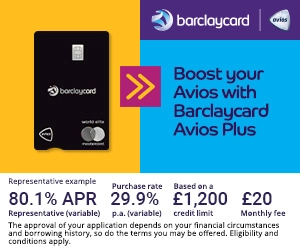
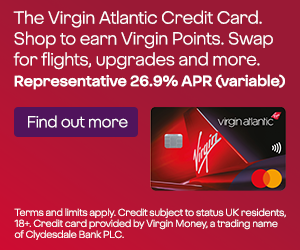
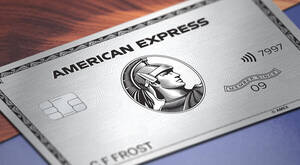



Comments (28)